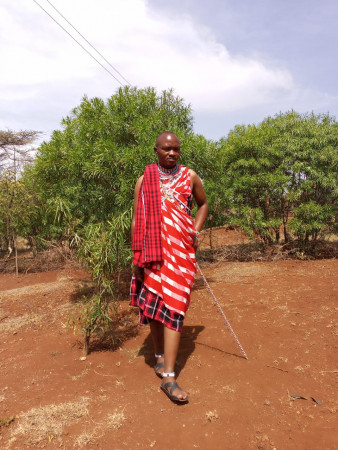Horror at home spurs group’s girl-child fight
By manuel.ntoyai, June 16, 2022Growing up in a Christian home in Rombo, Kajiado South, under well educated and working parents, female genital mutilation was not an issue Antony Sayianka ole Sankaine ever thought would affect him. It was for “uneducated folks” and was naïve, he always thought.
But all this changed one day during December school holidays after he travelled to Nairobi for a few days. On his return home, he was told his two younger sisters were sick. Sadly, they had undergone female genital mutilation (FGM).
This year, the theme of the Day of The African Child is: ‘Eliminating harmful practices affecting children: Progress on policy and practice since 2013. It could not be more timely for ole Sankaine.
As a teenager, he was involved in a number of campaigns against the vice. In schools and churches, he was taught that it was bad for women and, as he grew up into an adult, he found himself joining the crusade even more.
Cut deep at night
He recalls how he learnt of his sisters’ predicament many years ago. “When I returned home, I was told they were sick. But how could both of them fall sick at the same time? That would have been a huge coincidence. I started making further inquiries from other members of the extended family. That is when I was informed they had been “cut” during my absence. The cutter came at night and by the wee hours, she had left and crossed the border to Tanzania,” he intimates.
That incident would prove to be an eye opener for him. It made him more determined to help his community deal with the menace and he vowed to find more and effective ways to engage Kajiado residents. Ans it started a process that finally gave birth to the Maasai Transformation Organisation (Matro), a local community-based organisation based at Rombo Ward, Kajiado South Sub-County.
He is the co-founder and programme coordinator of the organisation, based in Loitokitok.
According to the latest Kenya Demographics Health Survey (KDHS, 2014), FGM prevalence in Kajiado County stands at 78 per cent, while nationally it is at 27 per cent.
As the world marks the African Child Day, amid the pompous celebrations and funfair, there is a need to take stock of the milestones reached and the lessons learnt in the past couple of years.
In 2011, the country enacted the Prohibition of Female Genital Mutilation Act (2011) and President Uhuru Kenyatta resolved to end FGM/C by the end of this year. The goal is unlikely to be met, although there are major achievements.
Compelling situations such as the Covid-19 pandemic did not help matters. During the lockdowns occasioned by the pandemic, cases of girls undergoing FGM were rampant.
“Rombo Ward is hugely affected by cross-border FGM. Last year, during 16 days of activism, the county’s Department of Gender reported that the FGM rate in Kajiado South was much higher.
“From such, it was imperative that we needed a paradigm shift. This is not about people not being educated on the negative effects — although in some parts the level of awareness is wanting. It is a combination of social, cultural norms and obligations, interwoven with traditional beliefs”, states Sayianka.
But, at the same time, there has been an increase in legislation at both national and county levels.
Harmful practices
In 2017, the High Court dismissed a petition to strike down the FGM/C Act, and further ordered the Attorney General to forward proposals to the Kenyan National Assembly for amendments to Article 19 of the Act so as to prohibit all harmful practices of FGM/C.
In Kajiado County, the Anti-FGM Policy was developed and launched in 2019, ushering a new process that brought the fight closer to home.
The policy provides the legal framework to fast-track eradication of FGM at the county level by creating decentralised governance structures that would be cascaded from ward to county levels.
While these are meaningful strides, another concern by activists has been on implementation, which requires both technical and financial commitments. The process is often marred by political schemes and other intrigues, instigating the need for organisations with expertise to fill such gaps through programmes such as Power To Youth.
This is a five-year scheme (2021–2025) to ensure that young people (under 35 years) are meaningfully included in discussions and decisions, particularly those related to sexual and reproductive health and rights (SRHR) of adolescent girls and young women.
“Programmes like Power To Youth are more effective as the leading partners are extensively experienced in strengthening underserved communities. Many of these communities do not usually participate in decision-making, and are most at risk of sexual and gender-based violence (SGBV) and SRHR violations,”says Sayianka, who is also a champion of the programme.
Strategic outreach
His organisation, Matro, has been a beneficiary of the programme. It has been given the capacity to build better internal control structures, and gained exposure to new ways of conducting strategic outreach at community levels. Today, Matro engages men and boys in its campaign and has enhanced access to quality services for prevention of FGM/C, response and care.
“As we mark this special day, we need to rethink our approach to FGM, which has complex interlinkages between child marriage and early pregnancy. Let’s also tackle underlying gender inequality issues that contribute to sustaining harmful practices, including women and girls’ exposure to poor health, discrimination, social stigma and exclusion,” remarks Sayianka.
